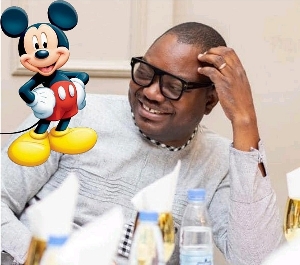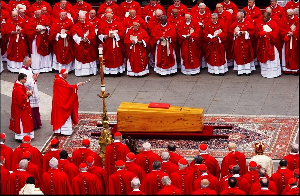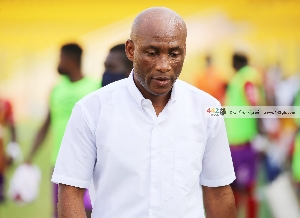At a reception recently, we had lively “beer-assisted” free-flowing conversations on all topics from archaeology to zoology, with lots of interesting theories being propounded.
Unexpectedly, the discussion zoomed in on my weekly articles.
They were commended by colleagues who said the articles satisfied their requirements of informing, entertaining, and educating. They also found them current, relevant, and humorous, though they wished they were longer.
However, while not disagreeing with the others, a colleague advocated for more science-based articles or articles about “Science!”
Almost simultaneously, he was told by the others that, the average “science/scientific” article which will necessarily require definitions/explanation of terminologies, may not likely be what readers would want in a short 800-word limit article.
They gave the example of such a recent “scientific” article which many did not understand because it was considered too technical. For them, a newspaper/online article must be light and easy reading, and not have the dense style of a textbook.
Nonetheless, for a change, I am taking up my colleague’s observation as a challenge for a science-based article. Since in recent times, I have done some flying to Kumasi/Tamale/Wa/Takoradi, I will venture into the world of flying/aviation.
So, how did flying come to the world?
Wright Brothers:
Despite the non-unanimity/controversy that surrounds how flying/aviation started, it is generally accepted that the American Wright brothers, Wilbur and Orville pioneered the flying of the airplane, being the first humans to fly a machine.
The brothers were bicycle repairers who decided to adventure beyond their comfort zone of repairing bicycles. On 17th December 1903 in Kitty Hawk, North Carolina, USA, Orville and Wilbur Wright became the first to fly a machine, thus becoming the first aviators in history.
The Wrights's first powered airplane flew a 12-second flight, traveling 36 metres (120 feet), with Orville piloting. Later that day, with Wilbur at the controls, he covered 255.6 meters (852 feet) in 59 seconds.
Orteig Challenge Prize:
A major fillip to the development and flying of the aircraft from the rudimentary 1903 start by the Wright brothers came on 22nd May 1919.
A New York businessman Raymond Orteig, challenged potential pilots with a $25,000 (net-present-value in 2023 of $450,000) reward for anyone who did a trans-Atlantic flight between New York City and Paris or vice-versa. Many pilots died in their attempt to win the Orteig Prize.
Finally, on 21st May 1927, American pilot Charles Lindbergh flying a single-engine aircraft “Spirit of St Louis” flew solo from New York to Paris.
It took him 33.5 hours. The Orteig cash prize of $25,000 was duly presented to him in June 1927 in New York City.
“Mach” & Brig Gen Yeager (Rtd):
A significant development in aviation history was to push aircraft speeds beyond previous records. In this, the word “MACH” was born. It was named after an Austrian physicist Ernst Mach after the designation had been proposed by the Swiss aeronautical engineer Professor Jackob Ackeret.
“Mach” showed the speed of an object in relation to the speed of sound. At 20 degrees Celsius (68 degrees Fahrenheit) at sea level, the speed of sound is 1,125 feet/second. This translates into 768 miles/hour or 1235 km/hour. “Mach 1” therefore became accepted as the speed of an aircraft at par with the speed of sound. Aircraft that flew below the speed of sound were classified as “sub-sonic” while those that flew beyond Mach One were “super-sonic!”
A phenomenon called the “sonic boom” was also discovered. As an object crosses the sound barrier of 768mph, the energy generated causes a loud noise that sounds like an explosion, hence the name sonic-boom.
On 14th October 1947, a young American Air Force captain, later Brig Gen Chuck Yeager (Rtd) became the first human to fly past the sound barrier in his Bell X-1 aircraft. He later trained America’s first batch of astronauts in the late 1950s.
Space Race:
A major contributory factor to the development of the aircraft was the Space Race. At the tail end of World War 2 in 1945, German scientists were captured both by the USA and USSR. In the Cold War which started immediately after WW2, both sides used the captured German scientists to develop rockets for Space exploration.
So important was the Space enterprise that on 1st October 1958, American President Dwight Eisenhower (Gen Rtd) commissioned the National Aeronautics and Space Association (NASA) to train astronauts. Out of 500 applicants, seven test pilots were selected to commence training as astronauts.
On 12th April 1961, Yuri Gagarin, a Russian cosmonaut/astronaut became the first human to journey to Space and back in his Vostok spacecraft. Three weeks later on 5th May 1961, American, later Rear-Admiral Alan Shepard became the first American and the second human to go to space! For the USA, it was a painful defeat of the USA by the USSR in the Space race!
The Space Race led to the development of reusable NASA shuttle aircraft like Atlantis, Challenger, Columbia, Discovery, and Endeavour.
Discussion
I have wondered how the Wright brothers would feel if they lived in 2023, seeing the development of the rudimentary flying machine they pioneered in 1903. Wilbur died young of typhoid fever in 1912, but Orville lived until 1948 when he died at age 77. Before his passing, he met Charles Lindbergh in 1927.
Without a doubt, one of man’s greatest inventions has been the aircraft, thanks to Orville and Wilbur Wright. While this article has concentrated on fixed-wing aircraft, it does not lose sight of the tremendous effort that went into the development of rotary wings (helicopters).
Ghana Airways, the flag carrier of Ghana was founded in July 1958. Sadly, the airline ceased operations in June 2005.
In July 1959, the Ghana Air Force was started as the third Service of the Ghana Armed Forces after the Army and Navy. It has since played a major role in support of Ghana’s development.
Leadership, lead! Fellow Ghanaians, WAKE UP!
The writer is a former CEO of the African Peace Support Trainers Association in Nairobi, Kenya, and Council Chairman of Family Health University College, Accra
Opinions of Monday, 25 December 2023
Columnist: Brig Gen Dan Frimpong (Rtd)
The 'Science/Scientific' challenge?
Opinions














